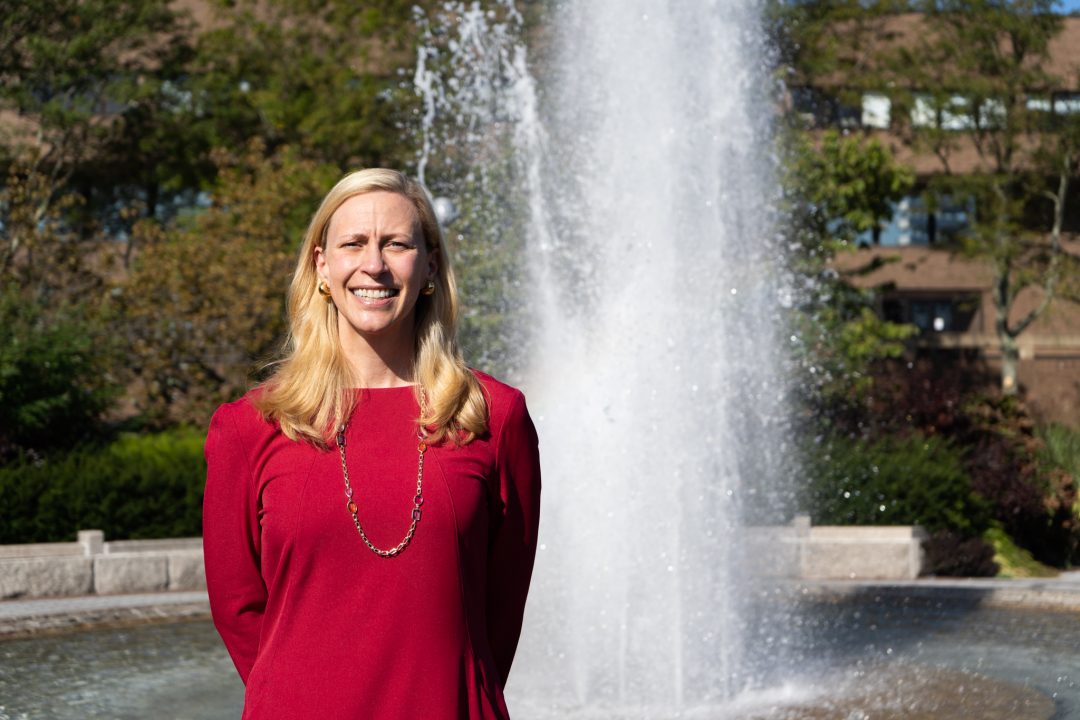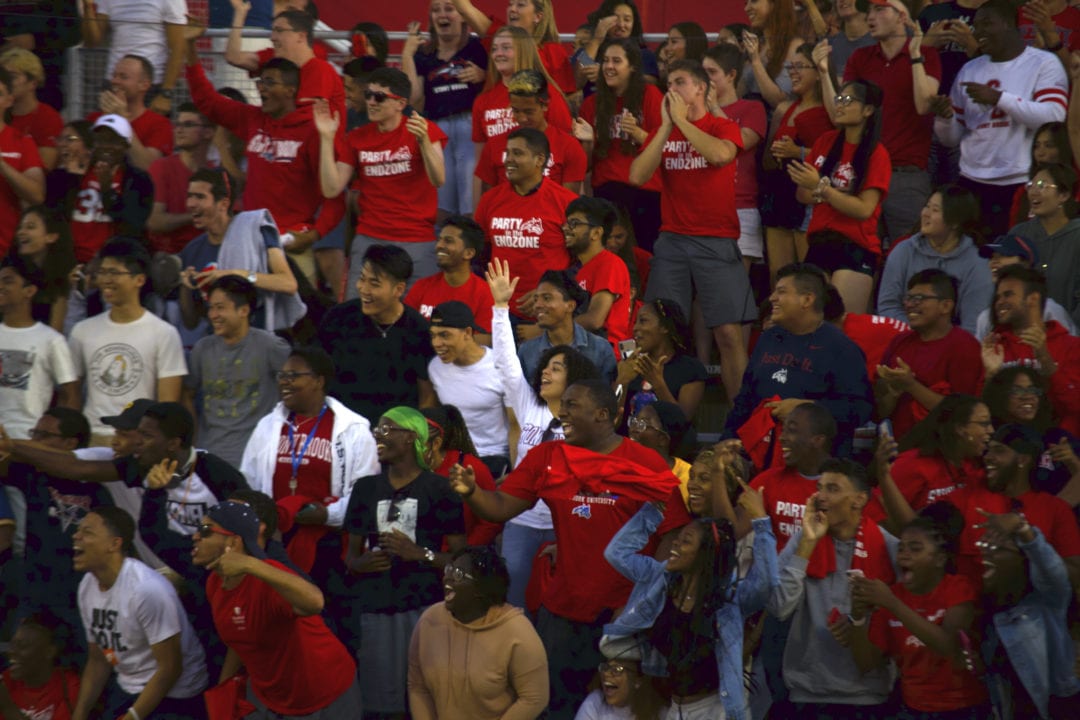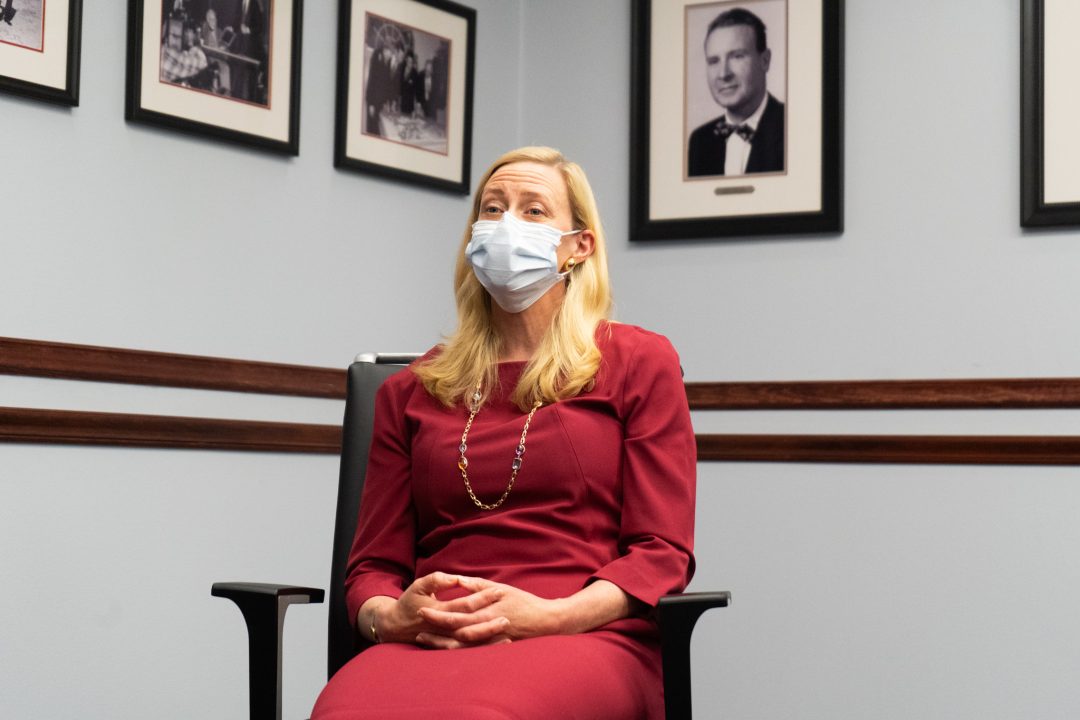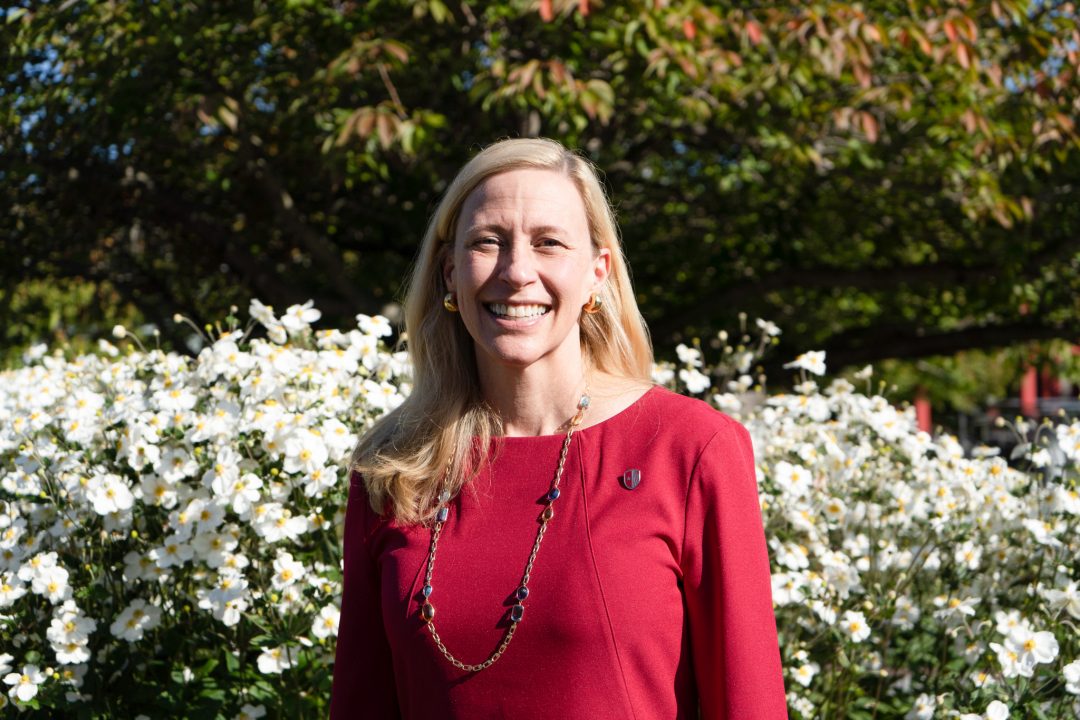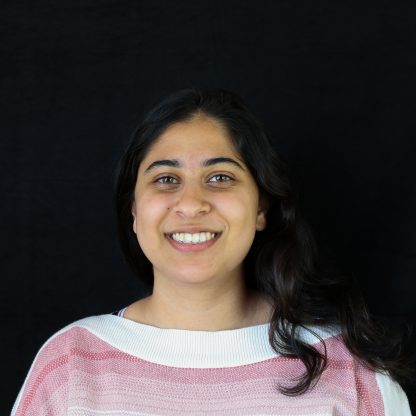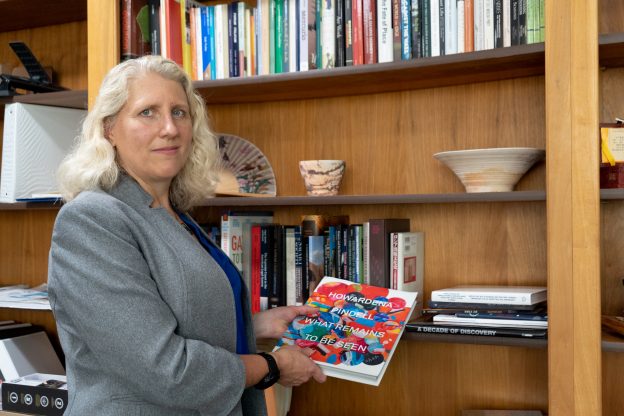
Stony Brook University’s College of Arts and Sciences (CAS) is working on enhancing diversity within the faculty.
In a recent post published on the school’s website, Dean Nicole Sampson and Associate Dean Amy Cook of the CAS addressed the lack of diversity and outlined some steps they are taking to combat this. According to Dean Sampson, the CAS faculty is currently 3.7% Black, 5.2% Latinx and 0.4% American Indian or Alaskan Native.
In the post, Sampson and Cook acknowledged that “a diversity of perspectives, ideas, and experiences are critical to achieving meaningful engagement, which requires diverse representation within the professoriate.”
According to the Race and Ethnicity in Higher Education report by the American Council on Education, classrooms on college campuses across the United States are becoming increasingly diverse. Stony Brook University (SBU), specifically, is known for its success in recruiting and educating underrepresented minority undergraduate students. USA Today ranked SBU as the ninth most diverse university in the nation on its 2020 list.
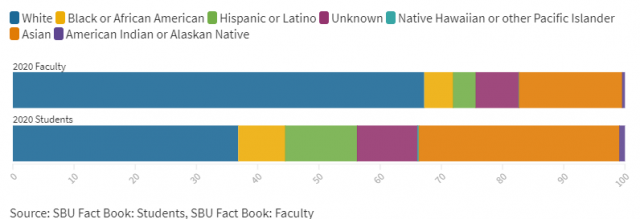
However, the increasing diversity in the student body is not mirrored by the faculty.
Stephanie Dinkins, an African-American art professor at CAS, reflected on some of her experiences at SBU as a woman of color, specifically on her pathway to tenure.
“A lot of my artwork was shown in centers that were in places like the Bronx and South Brooklyn, where there is a concentration of minority folks,” Dinkins said. “At Stony Brook, I’ve been asked point-blank, ‘Well, if you are always showing in these Black institutions or institutions of color, does that even count?’ This was part of my 10-year journey to tenure.”
Dinkins pointed out the issues with retaining faculty members of color. She noted that comments and questions like the ones she received could easily turn people away from wanting to work at SBU long-term. Dinkins mentioned that people looking to work at SBU might question how much they have to ignore in terms of racist comments and if it’s worth it.
“If the classroom doesn’t reflect diversity, I think students get a very particular understanding of who can be an authority figure in an academic setting, and that extrapolates out, causing diverse students from diverse backgrounds to question what their possibilities are through the academic sphere,” Dinkins said.
Clint Kyaw, a senior biology major in CAS, said he can feel the undiversified faculty reflected in his education.
“To me, it’s as if Stony Brook is putting professors of color in boxes and assigning specific roles to them based on their ethnicity and race,” Kyaw said. “I think this lack of diversity in science courses can discourage students of color from entering the field of science when they don’t see diversity in the staff that is supposed to prepare them.”
Cook acknowledged that moving forward, CAS “must be diverse” in order to find solutions to many research questions.
“We must have diversity in terms of disciplinary expertise as well as backgrounds,” Cook said. “Diversity is central to excellence.”
Part of the reason there is such a big disparity between the racial demographics of the students and the faculty is because of the differences in turnover rate — students matriculate every four years while faculty tend to remain for decades.
“We often fall into the trap of looking for somebody like us, identifying with candidates who share our experiences,” Sampson said about hiring new faculty.
Funding also plays a role in the diversity discrepancy. According to Sampson, the university has invested a sizable amount in ensuring that students from traditionally underrepresented groups are well-mentored, but there hasn’t been the same amount of support to promote diversity in faculty hiring.
CAS has taken various measures to promote the hiring of a more diverse faculty. Among the 26 different departments within CAS, almost all of them now have a committee dedicated to boosting diversity.
For example, the music department is revising the entrance requirements to certain programs to accommodate more students who are not classically trained, and the geoscience department is partnering with minority-serving institutions to bring in a more diverse group of graduate student candidates.
To facilitate interdisciplinary communications and conversations on race across departments, the CAS committees also created the IDEA Fellows Program, which is set to launch in Fall 2022. Candidates would be assessed based on their work in inclusion, diversity, equity and access before being evaluated at the departmental level under the new framework. The program also offers a clear path to the tenure track.
Dinkins, who has been working in some of the diversity committees within CAS, found these initiatives ineffective. As opposed to recognizing people for their scholarly work and hiring them by virtue of who they are, Dinkins said they are instead “making them explain themselves within the keyhole of diversity, equity and inclusion.”
Despite criticism, these new initiatives are spearheading changes in the school and have garnered support from the provost office and several deans. The committee is also drafting proposals to secure federal funding for similar projects on a larger scale.
Some of these projects extend beyond addressing ethnic diversity. For example, the Chemical Biology Training Program and the new National Science Foundation Research Traineeship award provide interdisciplinary cross-training for graduate students from across science and humanities. If CAS rethinks the programs, the National Institutes of Health would reward them with cash to support its research.
However, using funding as an incentive to increase diversity raises ethical concerns.
“If you’re requiring someone to do something so that they get money from it, are they really going to do it, or are they just going to pretend to do it?” Dinkins said. “We need to go deeper, and take more steps in order to genuinely initiate any change.”
In their blog post, Sampson and Cook emphasized the importance of a “new university,” stating that “we cannot solve the problems of tomorrow with the old university;” However, developing into a “new university” needs to be done the right way and not rushed. Dinkins cautioned that sometimes, when people try to fix things urgently, they only solve the problem on the surface.
“It’s like butter on toast: the toast is still burnt, there’s just butter on it,” she said.
According to Cook, there are conversations at a national level about how to improve the overall experience on campuses for faculty of color, considering various things like culture, promotion and tenure.
“If we don’t figure out how to create a university that’s going to be generating citizens and thinkers and scientists and artists and authors for tomorrow,” Cook said. “Then we’re not doing our job.”








